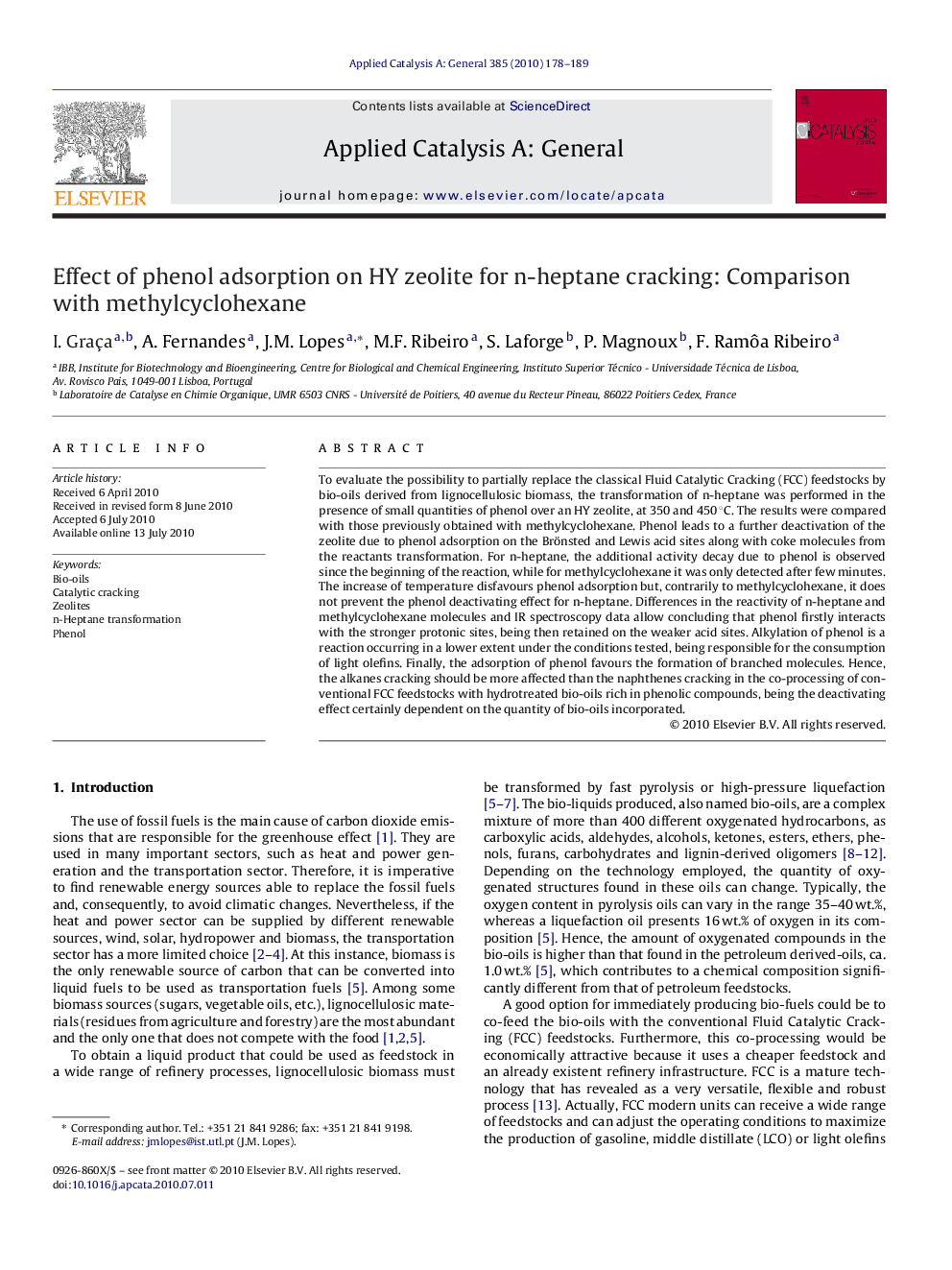| Article ID | Journal | Published Year | Pages | File Type |
|---|---|---|---|---|
| 41982 | Applied Catalysis A: General | 2010 | 12 Pages |
To evaluate the possibility to partially replace the classical Fluid Catalytic Cracking (FCC) feedstocks by bio-oils derived from lignocellulosic biomass, the transformation of n-heptane was performed in the presence of small quantities of phenol over an HY zeolite, at 350 and 450 °C. The results were compared with those previously obtained with methylcyclohexane. Phenol leads to a further deactivation of the zeolite due to phenol adsorption on the Brönsted and Lewis acid sites along with coke molecules from the reactants transformation. For n-heptane, the additional activity decay due to phenol is observed since the beginning of the reaction, while for methylcyclohexane it was only detected after few minutes. The increase of temperature disfavours phenol adsorption but, contrarily to methylcyclohexane, it does not prevent the phenol deactivating effect for n-heptane. Differences in the reactivity of n-heptane and methylcyclohexane molecules and IR spectroscopy data allow concluding that phenol firstly interacts with the stronger protonic sites, being then retained on the weaker acid sites. Alkylation of phenol is a reaction occurring in a lower extent under the conditions tested, being responsible for the consumption of light olefins. Finally, the adsorption of phenol favours the formation of branched molecules. Hence, the alkanes cracking should be more affected than the naphthenes cracking in the co-processing of conventional FCC feedstocks with hydrotreated bio-oils rich in phenolic compounds, being the deactivating effect certainly dependent on the quantity of bio-oils incorporated.
Graphical abstractFigure optionsDownload full-size imageDownload high-quality image (79 K)Download as PowerPoint slideResearch highlights▶ Phenol influence on the n-heptane (n-Hp) transformation over HY zeolite. ▶ Effect of temperature on the phenol-induced deactivation of HY zeolite. ▶ Phenol effect on the acidity drop of HY along time-on-stream, for n-Hp reaction. ▶ Phenol influence on the HY textural properties along time-on-stream. ▶ Comparison of phenol effect over HY for n-Hp and methylcyclohexane reactions.
